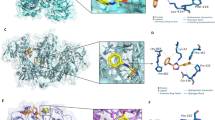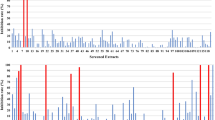Abstract
Two genetically diverse strains of Trypanosoma cruzi were tested in vitro for susceptibility to the solanum-derived triglycoside alkaloids solasonine and solamargine. Cytolytic assays were performed on epimastigotes (EMs) and bloodstream form trypomastigotes (BSFs) lifecycle stages by using serial dilutions of each alkaloid. Each alkaloid effectively lysed both lifecycle stages, although solasonine routinely required higher concentrations to induce similar results. EMs demonstrated greater resistance to cytolysis than BSFs at equal concentrations of either alkaloid. No significant resistance could be correlated to parasite strain. The reported synergistic cytolytic effects observed upon compounding solasonine and solamargine together were also tested. We failed to identify any cytolytic synergism in cultures of EMs or BSFs. The role of rhamnose-binding proteins (RBPs) in mediating cytolysis was investigated through competitive inhibition experiments. The addition of exogenous l-rhamnose to the media failed to reduce parasite attrition independent of the parasite lifecycle stage. Based on these results, we suggest the mechanisms involved in cytolysis of T. cruzi by solasonine and solamargine are largely independent of rhamnose receptor-specific interactions. We propose that attrition likely involves less-specific carbohydrate interactions, which lead to the formation and intercalation of sterol complexes into the parasite plasma membrane.




Similar content being viewed by others
References
Andrade, S. G., Magalhães, J. B., and Pontes, A. L. 1985. Evaluation of chemotherapy with benznidazole and nifurtimox in mice infected with Trypanosoma cruzi of different type. Bull. WHO 63:721–726.
Bonjour, E. L., Fargo, W. S., Al-Obaidi, A. A., and Payton, M. E. 1993. Host effects on reproduction and adult longevity of squash bugs (Heteroptera: Coreidae). Environ. Entomol. 22:1344–1348.
Bregano, J. W., Picao, R. C., Graca, V. K., Menolli, R. A., Jankevicius, S. I., Filho, P. P., and Jankevicius, J. V. 2003. Phytomonas serpens, a tomato parasite, shares antigens with Trypanosoma cruzi that are recognized by human sera and induce protective immunity in mice. FEMS Immunol. Med. Microbiol. 39:257–264.
Bushway, R. J., Bureau, J. L., and King, J. 1986. Modification of the rapid high-performance liquid chromatographic method for the determination of potato glycoalkaloids. J Agric Food Chem 34:277–279.
Cham, B. E. and Daunter, B. 1990. Solasodine glycosides: Selective cytotoxicity for cancer cells and inhibition by rhamnose in mice with sarcoma 180. Cancer Lett. 55:221–225.
Cham, B. E., Gilliver, M., and Wilson, L. 1987. Antitumour effects of glycoalkaloids isolated from Solanum sodomaeum. Planta Med. 53:34–36.
Chang, L. C., Tsai, T. R., Wang, J. J., Lin, C. N., and Kuo, K. W. 1998. The rhamnose moiety of solamargine plays a critical role in triggering cell death by apoptosis. Biochem. Biophys. Res. Commun. 242:21–25.
Chataing, B., Concepcion, J. L., Lobaton, R., and Usubillaga, A. 1998. Inhibition of Trypanosoma cruzi growth in vitro by Solanum alkaloids: A comparison with ketoconazole. Planta Med. 64:31–36.
Chena, M. A., Elizondo, S., Rodriquez-Paez, L., Nogeuda, B., and Wong, C. 2005. Trypanocidal activity of N-isopropyl oxamate on cultured epimastigotes and murine trypanosomiasis using different Trypanosoma cruzi strains. J. Enzyme Inhib. Med. Chem. 20:189–197.
Cipollini, M. L. 2000. Secondary metabolites of vertebrate-dispersed fruits: Evidence for adaptive functions. Rev. Chil. Hist. Nat. 73:421–440.
Cipollini, M. L. and Levey, D. J. 1997a. Secondary metabolites of fleshy vertebrate-dispersed fruits: Adaptive hypotheses and implications for seed dispersal. Am. Nat. 50:346–372.
Cipollini, M. L. and Levey, D. J. 1997b. Why are some fruits toxic? Glycoalkaloids in Solanum and fruit choice by vertebrates. Ecology 73:782–798.
Courtenay, O. 1994. Conservation of the Maned Wolf: fruitful relationships in a changing environment. Canid News 2:41–42.
Ferguson, M. A. J. 1997. The surface glycoconjugates of trypanosomatid parasites. Philos. Trans. Biol. Sci. 352:1295–1302.
Fewell, A. M., Roddick, J. G., and Weissenberg, M. 1994. Interactions between glycoalkaloids solasonine and solamargine in relation to inhibition of fungal growth. Phytochemistry 37:1007–1011.
Grimaldi, D. and Engel, M. S. 2005. Evolution of Insects. Cambridge University Press, Cambridge.
Hart, B. L. 1990. Behavioral adaptations to pathogens and parasites: Five strategies. Neurosci. Biobehav. Rev. 14:273–294.
Huffman, M. A. and Caton, J. M. 2001. Self-induced gut motility and the control of parasite infections in wild chimpanzees. Int. J. Primatol. 22:329–346.
Kupchan, S. M., Barboutis, S. J., Knox, J. R., and Cam, C. A. 1965. Beta-solamarine: Tumor inhibitor isolated from Solanum dulca. Science 150:1827–1828.
Lewis, W. H., Lamas, G., Vaisberg, A., Corley, D. G., and Sarasara, C. 1999. Peruvian medicinal plant sources of new pharmaceuticals. Pharm. Biol. 37, (Supplement 1):69–83.
Powell, M. R. and Kuhn, R. E. 1980. Measurement of cytolytic antibody in experimental Chagas disease using a terminal radiolabeling procedure. J Parasitol 66:399–406.
Revollo, S., Oury, B., Laurent, J.-P., Barnabé, C., Quesney, V., Carrière, V., Noel, S., and Tibayrenc, M. 1998. Trypanosoma cruzi: Impact of clonal evolution of the parasite on its biological and medical properties. Exp. Parasitol. 89:30–39.
Ripperger, H. 1995. Steroid alkaloid glycosides from Solanum robustum. Phytochemisty 39:1475–1477.
Roddick, J. G., Rijnenberg, A. L., and Weissenberg, M. 1990. Membrane-disrupting properties of the steroidal glycoalkaloids solasonine and solamargine. Phytochemistry 29:1513–1518.
Roddick, J. G., Rijnenberg, A. L., and Weissenberg, M. 1992. Alterations to the permeability of liposome membranes by the solasodine-based glycoalkaloids solasonine and solamargine. Phytochemistry 31:1951–1954.
Roddick, J. G., WReissenberg, M., and Leonard, A. L. 2001. Membrane disruption and enzyme inhibition by naturally-occurring and modified chacotriose-containing Solanum steroidal glycoalkaloids. Phytochemistry 56:603–610.
Scott, D. A., De Sousa, W., Benchimol, M., Zhong, L., Lu, H. G., Moreno, S. N., and Docampo, R. 1998. Presence of a plant-like pyrophosphatase in acidocalcisomes of Trypanosoma cruzi. J. Biol. Chem. 273:22151–22158.
Udalova, Z. V., Zinov’eva, S. V., Vasil’eva, I. S., and Paseshnichenko, V. A. 2004. Correlation between the structure of plant steroids and their effects on phytoparasitic nematodes. Appl. Biochem. Microbiol. 40:93–97.
Vitazkova, S., Long, E., and Glendinning, J. 2001. Mice suppress malaria infection by sampling a bitter chemotherapy agent. Anim. Behav. 61:887–894.
Acknowledgments
We acknowledge the Faculty Development Grant program and the Office of the Provost at Berry College for financial support, Ashley Wimsett, Brad Meers, and Emily Pierce of Berry College for technical assistance, and Andrea Hall for editorial assistance.
Author information
Authors and Affiliations
Corresponding author
Rights and permissions
About this article
Cite this article
Hall, C.A., Hobby, T. & Cipollini, M. Efficacy and Mechanisms of α-Solasonine-and α-Solamargine-Induced Cytolysis on Two Strains of Trypanosoma cruzi . J Chem Ecol 32, 2405–2416 (2006). https://doi.org/10.1007/s10886-006-9153-5
Published:
Issue Date:
DOI: https://doi.org/10.1007/s10886-006-9153-5




